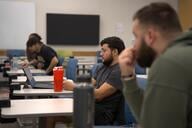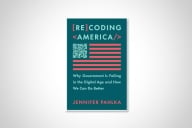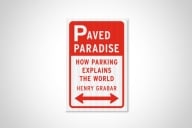You have /5 articles left.
Sign up for a free account or log in.
What’s the difference between “traditional” and “seasoned?”
It’s the difference between Anya Kamenetz’ previous book, DIY U, and her latest, The Test. I’m happy to report that the new book is a vast improvement on the earlier one.
Kamenetz has been a high-profile voice on higher education issues for probably a decade now. She made her name writing about the student loan crisis, and was an early and strong adherent of technological alternatives to colleges. She’s an uncommonly readable writer with energy and a point of view. (I mean that as a compliment.) Her point of view isn’t always terribly coherent -- I outlined my issues with DIY U here, at some length -- but she can’t be accused of boring neutrality. When she tells a story, she makes a point.
GIven my misgivings about the conceptual underpinnings of her earlier work, I was a little reluctant to read The Test. But I’m happy to report that her reportage has become more thoughtful, without losing its energy or accessibility. It’s a strong, smart, readable, and intellectually honest book.
That last point is probably the most notable change in her style. Her earlier stuff wasn’t deliberately dishonest, exactly, but it was certainly polemical. But The Test opens with a confession of ambivalence that keeps her polemical impulses mostly in check.
The book is a history and critique of standardized testing in the American K-12 educational system. It opens with a credible, if somewhat predictable, set of indictments against standardized tests, giving a respectful airing to each point. But it includes, as counterpoint, Kamenetz’ own ambivalence as a parent. She understands and largely agrees with many of the attacks on standardized tests. But she also wants her daughter to do really well on them.
Exactly. That’s exactly the issue. As a parent, I know it well. Critique the machine, if you will, but you still have to live in it.
Accordingly, the book is divided into three parts: a critical overview of the history of tests; some possible alternatives to tests; and tips for parents on helping their kids navigate the tests they have to take.
And that’s why it’s so fascinating.
Where her earlier works were largely about attacks on “traditional” higher education and the staid institutions within it, here, longtime teachers are “seasoned professionals.” The seasoned teachers are set upon by ever more tests, many driven either by a desire to punish the poor -- Kamenetz openly acknowledges the racism that pervades the historical practice of psychometrics -- or by a desire to make sure that whatever else happens, the poor are not forgotten. The overlap in the Venn diagram between those two positions is where standardized tests thrive. NCLB is often blamed on or attributed to George W. Bush, and there’s warrant for that, but it would not have passed without the support of Ted Kennedy. Testing presented solutions for both.
Kamenetz notes, correctly, that the long-held view of intelligence -- whether expressed as “g,” “IQ,” or whatever else -- was that it was “fixed” at a given point for life. Therefore, your IQ at any point was your IQ at every point. In that view, there’s not much point in wasting resources on people who will never get any smarter. (You wouldn’t be surprised to learn how that was mapped onto racial categories…) But some exciting recent work suggests that to the extent that we can speak meaningfully of “intelligence,” it can change over time. t responds to mental exercise, just as your time running a mile responds to physical exercise.
That’s liberatory, in the sense that nobody needs to be written off based on a single data point. But it could also become ammunition for the argument that we need far more testing. After all, the only way to track change is by repeated observation over time. But as Kamenetz notes, schools are already buffeted by so much testing that it gets in the way of teaching and learning.
Her alternatives are appealing. She outlines several alternatives, grouped into what she calls Team Robot, Team Monkey, Team Butterfly, and Team Unicorn. They represent progressive degrees of change, ranging from better tests -- the robot approach -- to rampant gamification and the sympathetic use of data analytics, in the case of team unicorn. Throughout, though, she notes that every version allows findings to be used for good or ill. If a school scores badly, it could signal a need for more resources, or it could trigger punitive cuts.
Kamenetz’ last chapter is mostly about mindfulness, though it reminded me of the appendix to The Organization Man, by William Whyte. Whyte’s appendix was titled “How to Cheat at Personality Tests,” and it was pretty much faithful to its title. Kamenetz doesn’t advocate cheating, but her shift from a conceptual overview to news-you-can-use serves a similar function.
I approached The Test warily, but came away impressed. Kamenetz manages to find grounds for optimism in a subject that could lend itself to fatalism, and she does it without dismissing the needs that the status quo serves. She has kept the energy and readability of her earlier work, while adding something like wisdom. It’s certainly the most human treatment I’ve seen of the subject, and it gives me hope that when she returns to writing about higher ed, it will be with that same depth.



